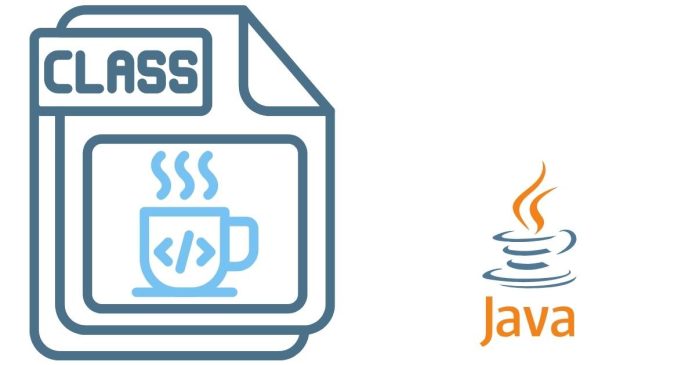The PrintWriter class in Java is part of the java.io package and provides convenient methods for writing formatted text to a file, console, or other output streams. It extends from Writer and is used to write text output that is automatically buffered for better performance. Additionally, PrintWriter provides easy methods for writing primitive data types, strings, and formatted text, making it more flexible than basic output streams like FileWriter.
Key Features of PrintWriter:
- Buffered Output: It internally uses buffering, which improves performance when writing data to files or other output streams.
- Convenient Methods: Provides methods like
print(),println(),printf(), etc., to write formatted text and data. - Auto-Flush: Can be configured to automatically flush the output buffer when a
println()method is called or when certain thresholds are reached.
Constructor Overloads:
PrintWriter(OutputStream out): Creates aPrintWriterobject to write data to the specifiedOutputStream(e.g.,FileOutputStream).PrintWriter(Writer out): Creates aPrintWriterobject to write data to the specifiedWriter(e.g.,FileWriter,BufferedWriter).PrintWriter(OutputStream out, boolean autoFlush): Creates aPrintWriterwith automatic flushing enabled or disabled.PrintWriter(String fileName): Creates aPrintWriterobject to write to a file with the specified name.
Common Methods in PrintWriter:
print(): Writes the specified data (can be a string, number, or any object).PrintWriter writer = new PrintWriter(System.out); writer.print("Hello, "); writer.print("world!"); writer.flush(); // Output: Hello, world!println(): Writes the specified data followed by a newline.PrintWriter writer = new PrintWriter(System.out); writer.println("Hello, world!"); // Output: Hello, world! (followed by a newline)printf(): Writes formatted output using a format string (likeSystem.out.printf()).PrintWriter writer = new PrintWriter(System.out); writer.printf("This is an integer: %d", 42); // Output: This is an integer: 42flush(): Forces the data in the buffer to be written to the output stream immediately.PrintWriter writer = new PrintWriter(System.out); writer.print("Hello, "); writer.flush(); // Data is written to the console immediatelyclose(): Closes thePrintWriterstream, ensuring that all data is written and that any associated resources are freed.PrintWriter writer = new PrintWriter("output.txt"); writer.println("Hello, world!"); writer.close();checkError(): Returns a boolean indicating whether any error has occurred during writing.PrintWriter writer = new PrintWriter("output.txt"); if (writer.checkError()) { System.out.println("An error occurred while writing."); }
Example 1: Writing to a File Using PrintWriter
import java.io.*;
public class PrintWriterExample {
public static void main(String[] args) {
try {
// Creating a PrintWriter to write to a file
PrintWriter writer = new PrintWriter("output.txt");
// Writing to the file using println() and print()
writer.println("Hello, world!");
writer.print("This is a test of PrintWriter.");
// Closing the writer
writer.close();
System.out.println("Data written to output.txt successfully.");
} catch (IOException e) {
e.printStackTrace();
}
}
}
- Explanation: In this example, we create a
PrintWriterobject that writes to a file calledoutput.txt. Theprintln()method writes a string followed by a newline, and theprint()method writes a string without a newline. - File content (
output.txt):Hello, world! This is a test of PrintWriter.
Example 2: Using PrintWriter with Console Output
import java.io.*;
public class PrintWriterConsoleExample {
public static void main(String[] args) {
// Creating a PrintWriter for console output
PrintWriter writer = new PrintWriter(System.out);
// Writing data to console
writer.println("Hello, console!");
writer.printf("Formatted number: %.2f", 3.14159);
// Flushing to make sure data is immediately output
writer.flush();
// Closing the writer
writer.close();
}
}
- Explanation: Here, a
PrintWriteris used to write directly to the console (standard output,System.out). Theprintln()method outputs a line of text, andprintf()is used to format a floating-point number. - Console Output:
Hello, console! Formatted number: 3.14
Example 3: Using PrintWriter with Auto-Flush
import java.io.*;
public class PrintWriterAutoFlushExample {
public static void main(String[] args) {
try {
// Create a PrintWriter with auto-flush enabled
PrintWriter writer = new PrintWriter(new FileWriter("autoflush_output.txt"), true);
// Writing to the file with auto-flush enabled
writer.println("Hello, world!"); // Data is immediately flushed to the file
writer.printf("Current time: %tT", System.currentTimeMillis());
// Closing the writer (no need to explicitly flush as auto-flush is enabled)
writer.close();
} catch (IOException e) {
e.printStackTrace();
}
}
}
- Explanation: The
PrintWriteris initialized with an auto-flush mode (enabled by passingtrueas the second parameter in the constructor). This ensures that every time theprintln()method is called, the data is written to the file immediately, without needing to manually callflush(). - File content (
autoflush_output.txt):Hello, world! Current time: 14:22:45
Important Notes:
- Auto-flushing: By default,
PrintWriterdoes not auto-flush. However, you can enable auto-flushing in two ways:- By passing
trueas the second argument to the constructor. - By calling the
flush()method explicitly after aprint()orprintln()operation.
- By passing
- Character Encoding:
PrintWriteruses the default character encoding unless explicitly set otherwise. To specify a character encoding, you can useOutputStreamWriter:PrintWriter writer = new PrintWriter(new OutputStreamWriter(new FileOutputStream("file.txt"), "UTF-8")); - Exception Handling:
PrintWriteris more lenient than otherWriterclasses in that it doesn’t throwIOExceptiondirectly. Instead, it sets an error flag if an I/O exception occurs during writing. You can check for errors usingcheckError().
Conclusion:
The PrintWriter class in Java provides an easy-to-use and efficient way to write data to output streams, with built-in methods for formatting and handling data. It is commonly used for writing text data to files or the console, and can be configured with auto-flush for real-time writing. With its combination of simple syntax, flexibility, and buffered output, PrintWriter is a useful tool for many Java I/O tasks.


